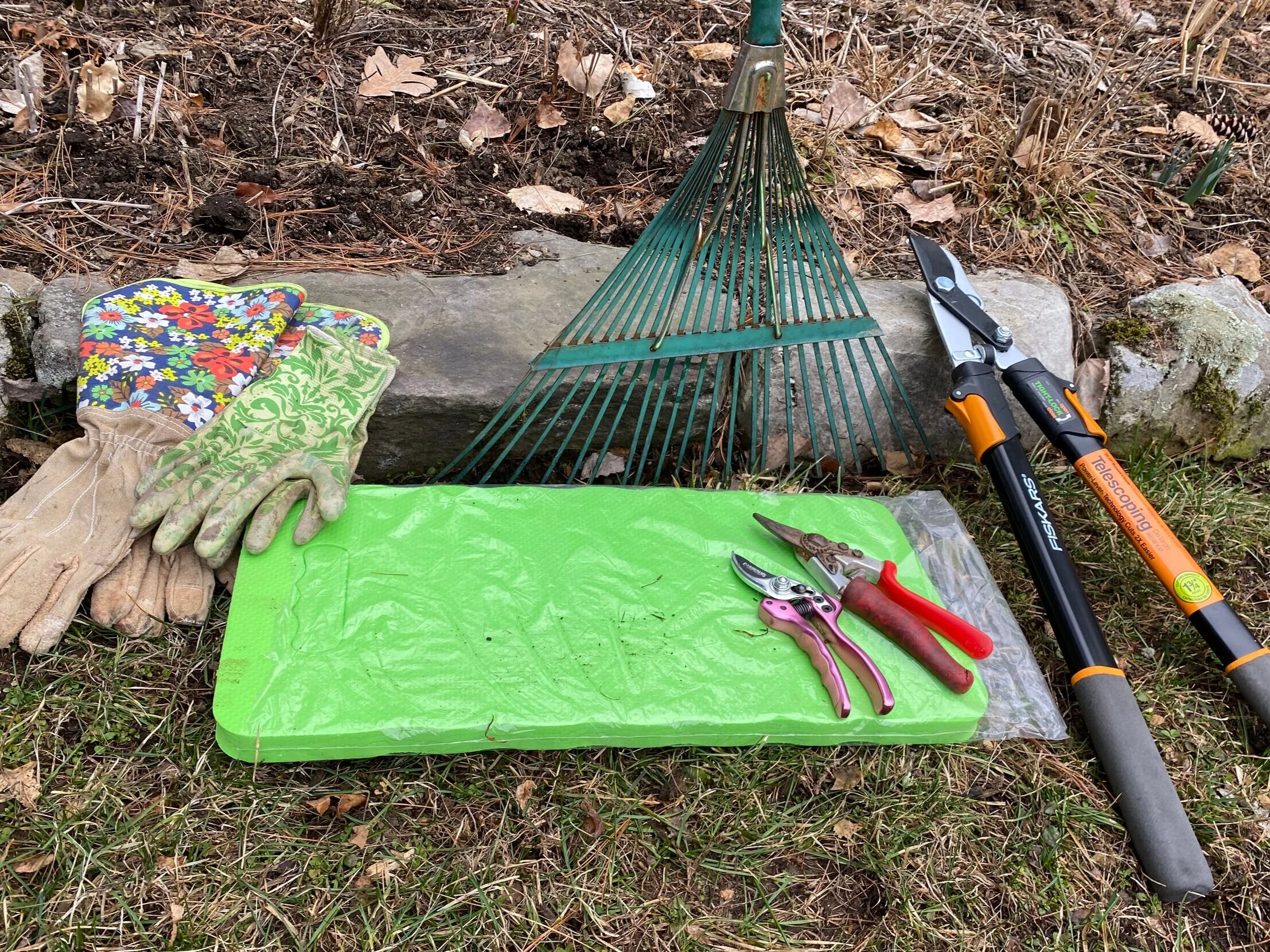Top 3 Garden Cleanup Tasks
Grab your gear and get ready to start your growing season off right!
Spring is undoubtedly the busiest season for gardening. This is because there are many things we must do to ensure our gardens will thrive this season. Listing them all would be overwhelming! So let’s start with the most important ones. If I had to pick just three things to do during spring cleanup this year, here’s what I’d recommend:
REMOVAL OF OLD PLANT DEBRIS AND LEAVES: Cut back and rake out any previous stalks and stems from last years growing season. This will not only give your gardens a neat and orderly start to spring, but it takes and disease and fungal spores out of your garden so that the chances of your plants being affected this year are much less. During the cut back, remember to clean your pruning devices with rubbing alcohol when switching from plant to plant. especially when you know there there were issues with the plant you’re cutting back. This makes sure you wont contaminate other plants.
ADD A LAYER OF COMPOST: Once cleanup and removal is finished, adding a good layer, (2”+) of organic compost is the most important thing you can do to provide your plants and shrubs with nutrients they need to thrive. Good compost will replenish the nutrients in the soil that were depleted from the previous years growing season. Compost also keeps your soil healthy. If the addition of straight compost is not in your budget, be sure to mulch with a good layer of organic composted mulch, this is finer than a generic mulch and enhanced with compost to provide nutrients and break down quicker than traditional wood chip mulch.
PRUNE: Pruning is essential for some shrubs, trees and perennial vines. Pruning helps to shape your tree or shrub by eliminating crossing branches, dead and diseased branches and increasing airflow throughout the shrub. Not all shrubs should be pruned in the spring, though. Shrubs that bloom in the spring should not be pruned because you will cut off the blooms. Eek! The shrubs that need pruning in spring will be shrubs that bloom on new wood, meaning the flowers come from the current years growth. As a rule of green thumbs, pruning should be done in late winter/early spring for shrubs that bloom on new wood. Shrubs that bloom on old wood should be pruned when the flowering cycle is over, generally late spring, early summer. Here are spring pruning candidates:
Hydrangeas (the kind that bloom on new wood, not macrophylla or mophead varieties)
Roses
Dogwoods
Clethras (summersweet)
Butterfly Bushes
Burning Bushes
Smokebushes
Fruit Trees
Clematis vines can be tricky to prune. There are three prune groups and each requires pruning at specific times.
Prune Group 1 Clematis bloom on old wood. This means little or no pruning until the flowering stage is over. They bloom in early spring on buds made last year. Prune only to shape the vine.
Prune Group 2 Clematis can bloom on old or new wood from late spring to early summer and can repeat bloom. Prune lightly after flowering to thin out vines as needed.
Prune Group 3 Clematis are vines that only bloom on new growth, so they are pruned back hard in the spring (6”-12”) from the ground every spring.
How do you know which type of clematis you have? When you buy the clematis, the tag will tell you the name and which prune group it belongs to. If you don’t have the tag or don’t remember the name, you can look at when your vine blooms. Prune type 1 blooms generally in early spring. Prune type 2 bloom late spring to early summer and repeats bloom. Prune type 3 blooms summer into fall. Prune accordingly for the following year and see how the vine responds.
Spring cleanup can be daunting but start with the important tasks first. Don’t overwhelm yourself to the point of getting nothing done. Once the growing season begins, it takes off fast. Be ready and prepared to enjoy your gorgeous gardens this season! Follow our gardening guides all year long on Facebook, Instagram or Youtube!

